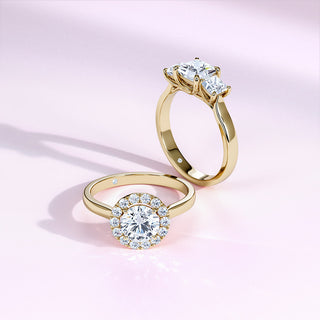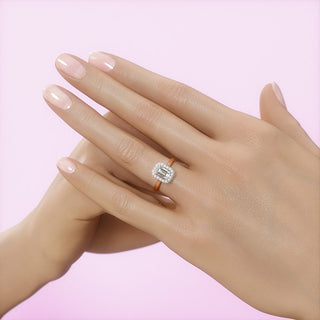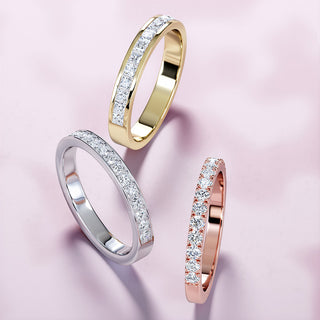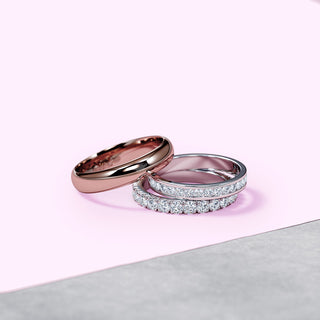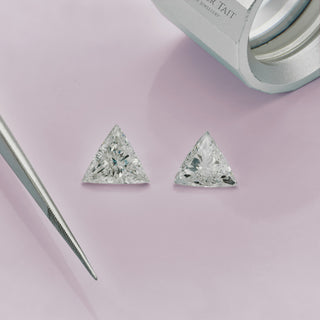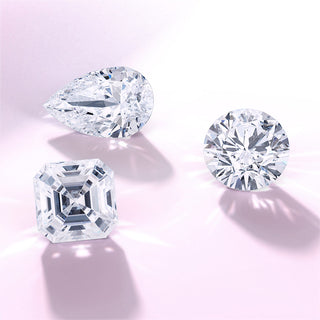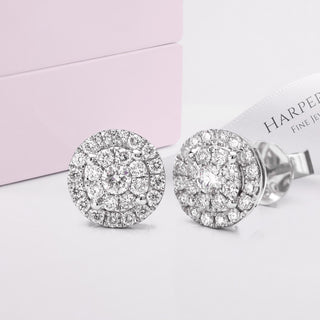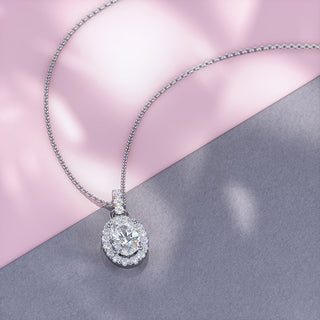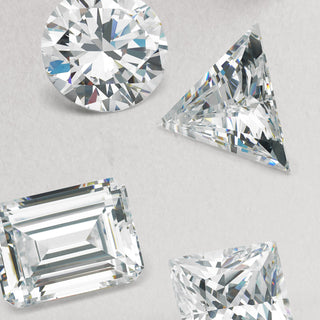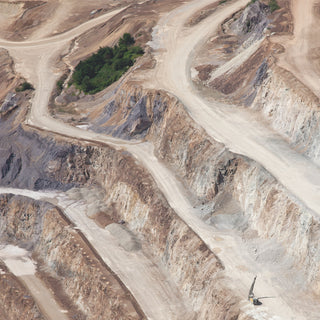What is a Cushion Diamond?
The cushion-cut diamond is a modern evolution of an antique cut. A square shape with brilliant cut facets, the cushion cut features rounded corners. Descending from the old mine cut, cushion diamonds have been brought up to date with brilliant cut facets, deliberately designed to maximise fire and scintillation. With its softly rounded shape, a cushion cut diamond resembles a pillow - hence its name.

How Many Facets does a Cushion Diamond have?
A cushion diamond has 58 facets, inspired by the round brilliant cut. The cushion cut tends to have larger facets than a round cut, creating slightly less scintillation - or glitter - but just as much life and fire.
What Makes a Cushion Diamond Special?
Antique diamonds are undoubtedly charming, but with fewer facets and often lower colour they can’t boast the same incredible sparkle as modern brilliant cuts. Enter the modern cushion cut, which has been steadily perfected since the 1920s into the wonderful cushion cut we know now. The resulting cut has all the graceful allure of an antique stone with the brilliance of a modern diamond. Even in the simplest of rings designs a cushion cut exudes vintage glamour. The modern cushion cut is particularly prized for its fire. Fire refers to those magical rainbow flashes you see scattering from a diamond when the light hits. A well cut cushion diamond emits an intense and beautiful fire.
How do you Know if a Cushion Diamond is Well Cut?
Of the four Cs, diamond cut is one of the most important. But like other fancy cuts, cushion shaped stones are not given specific cut grade.
Instead, it is left to diamond experts to choose the most beautiful stones based on a balance of factors - the symmetry of the facets, the quality of the polishing, and the balance of size and depth.

First, we consider the visual impact of the stone - how does the fire, brightness, and scintillation appear? Second, the design - how well proportioned is the diamond? Finally, we look at the craftsmanship - how skillfully has the diamond been cut and polished? While cushions are not given a cut grading, there are some suggested parameters for a well-cut stone, including;
Length to width ratio: the length to width ratio of a diamond measures how proportional it is. Diamonds which fall within these parameters will be most pleasing to the eye, with a more distinct and even shape. Look for a cushion diamond with a length to width ratio of 1.00 to 1.05, which will look perfectly square to the eye. But here, there is room for personal choice. A ratio of 1.10 or greater becomes an elongated cushion cut, which you may find just as beautiful.
Table: the table is the largest, central facet of a stone. The table needs to be large enough to let lots of light into the diamond, but not so large that the upper facets don’t have room to sparkle. Look for a cushion diamond with a table ratio between 60 - 65%
Depth: a diamond’s depth is the top-to-bottom measurement of a diamond, from its table to culet. The depth ratio compares this measurement with the overall width of the stone. The depth affects the visual balance of a diamond and its brilliance. If a stone is too shallow or deep the light will not refract properly, escaping through the base of the diamond instead of the top. Look for a cushion diamond with a depth ratio between 65 - 69%.
Choosing a Diamond Cut Grade
Cushion cuts can be found in a square shape or a more rectangular shape, called an elongated cushion. Which you choose in entirely personal preference. The classic square cushion cut feels quintessentially vintage, while the elongated cushion is particularly graceful on the finger.
A beautiful cushion diamond will delight with its exquisite fire, so pay attention to cut when choosing your stone. The symmetry of any square cut is particularly important, but other parameters really come down to personal preference. The beauty of cushion cuts is that no two diamonds are ever exactly the same - so choose the stone and setting that speaks most to you!
Choosing a Cushion Diamond Colour
Like so much about choosing a diamond, colour grade comes down to personal preference. Colour is graded by letters, with the scale starting at D. A colourless diamond grade is anything from grades D to F.
Most diamond lovers prefer the cool, white hue of a ‘colourless’ diamond, which is why these shades are so highly prized. For grades G and below the diamond colour gets progressively warmer, beginning to draw tones of yellow or brown. Some customers like these warmer shades, or find they can’t easily tell the difference in a yellow or rose gold ring.
If you have chosen a platinum or white gold setting, the difference between the white metal and a warmer colour stone will be more obvious, so we advise going no lower than a grade F.
Choosing the Clarity of a Cushion Diamond
Diamond clarity varies greatly, from perfectly clean stones to those with easily visible inclusions. Truly flawless diamonds are incredibly rare. Thanks to the dizzying sparkle of a cushion diamond, small inclusions are not as visible to the naked eye. It means you can choose a slightly included grade and still enjoy an eye-clean diamond. Which is to say, you will not notice any flaws without magnification.
We advise a grade between SI1 and VS2 for brilliant cut stones under 3.00ct. At these grades you will not notice any inclusions - only incredible sparkle! For very large stones, a higher clarity may be advised. Please contact us and we can talk through your options.
Is a Cushion Cut the Diamond for You?
If you’ve always coveted an antique diamond, the cushion cut is bound to steal your heart. The flexibility of the cushion shape allows you to choose the stone that really speaks to you, whether that’s a classic square shape or an elongated cut. Whichever mount you choose for your diamond, the exquisite antique styling of a cushion is bound to shine through. Balance tradition and modernity with a simple solitaire, or lean into vintage-inspired luxury with a sparkling halo.


